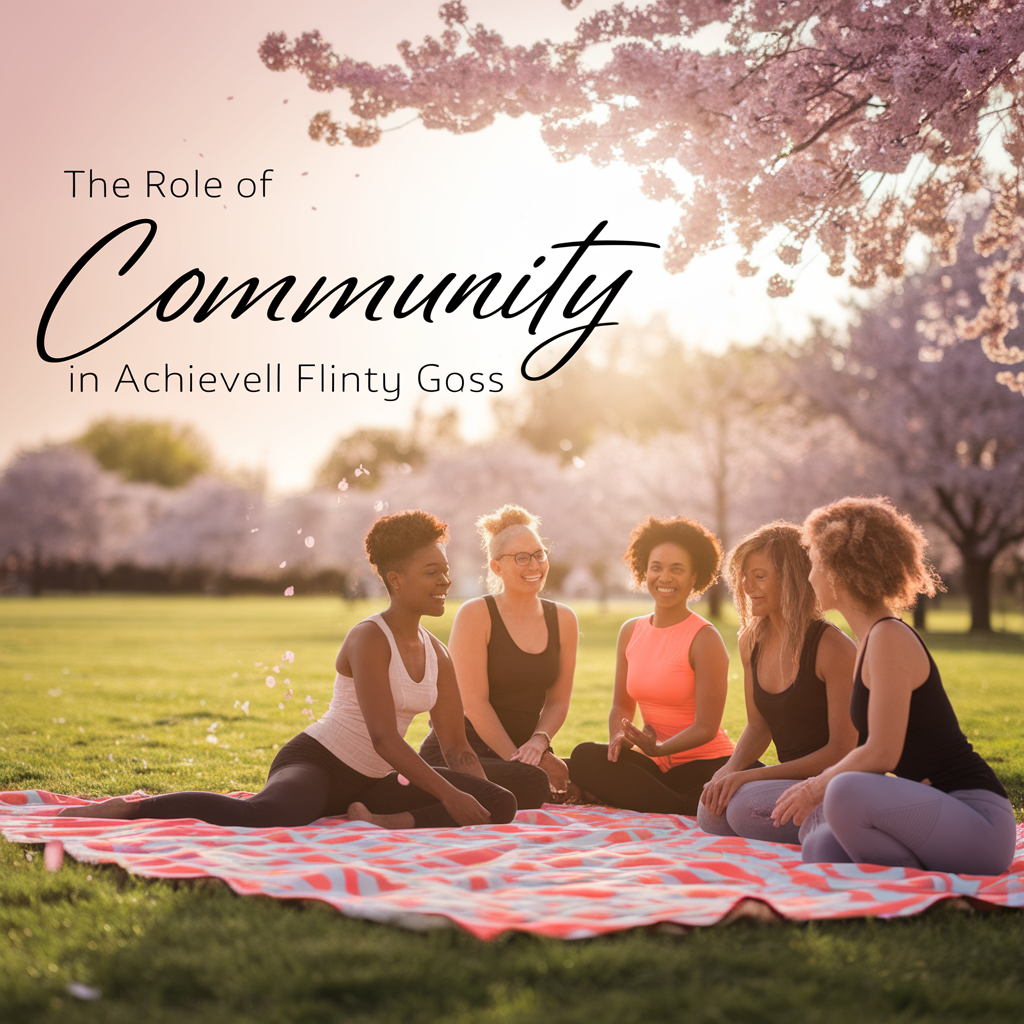The Role of Community in Achieving Fitness Goals
In a world where self-improvement often takes center stage, it’s easy to overlook the fact that we’re not in this alone. When it comes to achieving fitness goals, the role of community can be the secret ingredient that transforms a solitary pursuit into a collaborative journey. After all, who among us hasn’t felt a little more motivated to hit the gym when a friend texts us, “Are we still on for that workout?”
Why Community Matters
Let’s face it—working out can sometimes feel like a slog. The prospect of sweating it out on a treadmill or lifting weights can be daunting, especially when the only audience is the reflection staring back at you. This is where community becomes crucial. A supportive group can turn that intimidating gym into a place of camaraderie, encouragement, and even a sprinkle of competition.
Research backs this up. Studies show that individuals who engage with a community while pursuing fitness goals are more likely to stick with their routines and achieve desired outcomes. It appears that having a support system—whether it’s through friends, family, or organized groups—provides not just accountability but also a sense of belonging. It’s like the difference between running a marathon alone versus with a crowd of cheering fans. Suddenly, it’s not just about the finish line; it’s about the journey.
Types of Fitness Communities
Communities can take many forms, each with its own unique flavor. Here are a few different types of fitness communities that can help you on your journey:
- Local Gym or Fitness Center: Many gyms offer classes that foster a sense of community. Group fitness classes like Zumba, spinning, or kickboxing not only provide structure but also a shared experience that makes it easier to push through tough workouts.
- Online Fitness Forums: The digital age has opened up new avenues for connection. Online platforms such as Reddit, Facebook, or specialized fitness forums allow individuals to share their journeys, ask questions, and offer support.
- Running Clubs: There’s something magical about hitting the pavement with a group. Running clubs often cater to all levels, meaning you can find a pace that suits you while enjoying the company of fellow enthusiasts.
- Social Media Groups: Facebook groups or Instagram challenges can rally people around a common goal. They offer inspiration, accountability, and sometimes even a friendly competition!
- Charity Events: Participating in charity runs or fitness challenges not only gets you moving but connects you with like-minded individuals who are also there for a cause greater than themselves.
Real-Life Success Stories
To illustrate the power of community, let’s take a look at a few inspiring stories that showcase how shared goals can lead to incredible transformations.
From Couch to 5K
When Sarah decided to get fit, she was a self-proclaimed couch potato. She signed up for a local 5K training program that included a group of diverse individuals, all with varying fitness levels. Together, they followed a structured plan that gradually increased their running distance. As they progressed, Sarah found herself not just running but bonding with others. The group’s encouragement helped her overcome the mental hurdles that had previously held her back. On race day, she crossed the finish line not only as a participant but as a proud member of a community that had supported her every step of the way.
The Power of Online Connections
Then there’s Mike, who discovered the world of online fitness communities during the pandemic. Feeling isolated and unmotivated, he joined a virtual workout group on Zoom. Not only did he gain access to various workouts, but he also formed friendships with individuals from different parts of the world. They shared tips on meal prep, offered words of encouragement, and even celebrated each other’s milestones. Through this online connection, Mike not only achieved his fitness goals but also forged bonds that transcended physical distance.
Accountability: The Secret Sauce
One of the strongest elements of a fitness community is accountability. There’s something about knowing that someone is waiting for you or checking in on your progress that adds an extra layer of motivation. It’s a bit like having a gym buddy who would rather see you succeed than indulge in that extra slice of pizza.
Consider this: if you’ve promised a friend you’ll attend a yoga class together, the chances of you actually going are much higher than if you were to go solo. Studies have shown that accountability can significantly impact our commitment levels. A significant number of people report feeling more determined to meet their goals when they know someone else is invested in their success.
Creating a Supportive Environment
Building a community isn’t just about finding like-minded individuals; it’s also about creating a supportive environment where everyone feels welcomed and encouraged. This can be particularly important in fitness, where feelings of vulnerability often emerge. A supportive community should celebrate achievements, no matter how small, and provide a safe space for individuals to express their struggles.
When I think back to my own experiences in various fitness communities, one moment stands out—a local charity spin class where every participant was cheered on by others, regardless of their cycling prowess. I remember thinking, “Here we are, all sweating together, and no one cares about how far we can go or how fast we can pedal.” That atmosphere of acceptance and encouragement was palpable, and it made the workout feel less like a chore and more like a celebration.
Challenges and Conflicts
Of course, communities aren’t without their challenges. Conflicts can arise, and not every group will be the right fit for everyone. Some individuals may feel intimidated by more experienced members, while others might find themselves in a competitive environment that doesn’t suit their personality. It’s crucial to find a community that aligns with your values and goals.
Let’s be honest—some people thrive on competition, while others prefer a more relaxed, laid-back atmosphere. It’s all about finding the right balance. (And if you happen to find yourself in a group that feels more like an exclusive club than a supportive community, it might be time to explore different options.)
Incorporating Technology
In recent years, technology has played a significant role in fostering fitness communities. Apps like Strava, MyFitnessPal, and Fitbit allow users to track their workouts, share their progress, and connect with friends. These platforms create a sense of community that extends beyond the physical space, allowing users to cheer each other on from afar.
Imagine posting your latest running distance on Strava and receiving a flurry of likes and comments from friends. It’s like virtual high-fives that give you that extra boost of motivation. These tools have transformed how we engage with fitness and each other, making it easier than ever to build and maintain connections.
Building Your Own Community
If you’re feeling inspired to cultivate your own fitness community, here are a few tips to get started:
- Start Small: Host a weekly walking group in your neighborhood. Even a couple of friends can create a sense of commitment.
- Utilize Social Media: Create a private group on Facebook or Instagram to share tips, challenges, and motivation.
- Join Local Events: Participate in local fitness events or charity runs. These are great opportunities to meet new people who share your interests.
- Be Inclusive: Ensure your community is welcoming to all fitness levels. Celebrate progress, no matter how small.
- Communicate Openly: Share your goals and encourage others to do the same. Open conversations foster trust and connection.
The Future of Fitness Communities
As we look to the future, it’s clear that the role of community in fitness will only continue to grow. The rise of hybrid models—where in-person meets digital—offers exciting opportunities for connection and engagement. Perhaps we’ll see more virtual races that allow participants to connect and compete regardless of location. Or maybe we’ll witness the emergence of new technologies that enhance community interactions.
Regardless of what the future holds, one thing remains certain: the journey toward fitness is often more fulfilling when we don’t go it alone. The shared experiences, the laughter, the struggles, and the triumphs are what make the path toward wellness truly rewarding.
Embracing the Journey Together
At the end of the day, achieving fitness goals is about more than just numbers on a scale or the amount of weight lifted. It’s about connection, support, and the joy of shared experiences. As you embark on your own fitness journey—or continue along the path you’re already on—remember the power of community. Surround yourself with those who lift you up, challenge you, and remind you that you’re not alone.
And who knows? You might just find that the friends you make along the way become as integral to your fitness journey as the workouts themselves. After all, it’s not just about the destination; it’s about the stories we create together on the way there.









